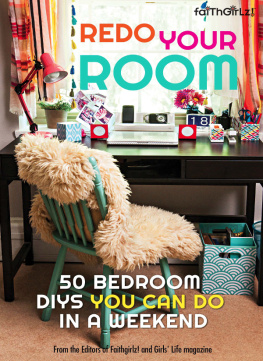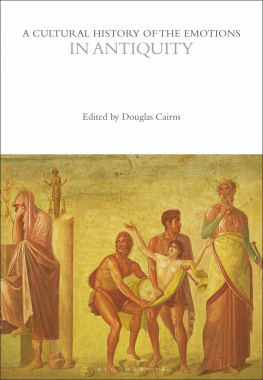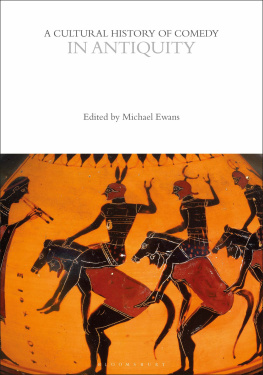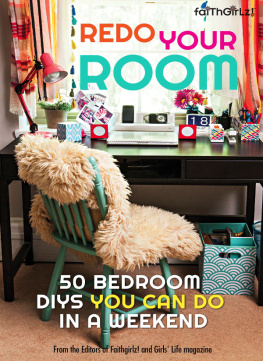The Bedroom

Published with assistance from the foundation established in memory of Amasa Stone Mather of the Class of 1907, Yale College.
English translation copyright 2018 by Lauren Elkin.
All rights reserved.
This book may not be reproduced, in whole or in part, including illustrations, in any form (beyond that copying permitted by Sections 107 and 108 of the U.S. Copyright Law and except by reviewers for the public press), without written permission from the publishers.
Originally published as Histoire de chambres, ditions du Seuil, 2009; Collection La Librairie du XXIesicle under the direction of Maurice Olender.
Yale University Press books may be purchased in quantity for educational, business, or promotional use. For information, please e-mail (U.K. office).
Set in Bulmer type by IDS Infotech Ltd.
Printed in the United States of America.
ISBN 978-0-300-16709-2 (hardcover : alk. paper)
Library of Congress Control Number: 2017962733
A catalogue record for this book is available from the British Library.
This paper meets the requirements of ANSI/NISO Z39.48-1992 (Permanence of Paper).
10 9 8 7 6 5 4 3 2 1
For Anne,
Sarah, and Vincent
Contents
Translators Note
THE TERM CHAMBRE in French is delightfully vast and ambiguous in its many meanings; we are far more specific in English and spell out whether we mean room or bedroom or chamber, guild, or house. Where there is a clear English referent, I have supplied it; where Perrot refers to a specifically French cameral practice, more than one kind of room at a time, or is employing wordplay, I have left the French term and given the closest English translation in parentheses. In some places I have preferred bedchamber where bedroom felt too contemporary. All citations are my translations unless otherwise indicated in the notes.
The Bedroom
Chamber Music
WHAT MAKES SOMEONE write a book?
Why write a book about bedrooms? Its a subject strange enough that its surprised more than one person Ive mentioned it to; my interlocutors have become vaguely worried to hear Im wandering off into such questionable territory. The answer could be for personal reasons, unknown even to myself; this doubtless explains my more or less spontaneous response when Maurice Olender inquired what kind of book I might want to write. Or a taste for interiority, arising from the mystique of convents for young girls; I realized later the extent to which this was steeped in a world of fairy tales, with their magical canopy beds, and illnesses suffered through wartime in the anguished solitude of a grand Chekhovian house; the cool shade of an afternoon nap in a torrid summer in Poitou, so deep into the southwest that its nearly Spanish; the anticipation you feel entering a bedroom with the one you love; the pleasure of closing the door to your hotel room in the provinces or abroad, after a noisy day cluttered with mumbling and idle chatter. These are the reasons, profound or pointless, why I decided to write about a place that is so saturated with intrigue and memory. My own experiences in rooms have also infiltrated this story. We all have our own rooms, and this book is an invitation to rediscover them.
Many roads lead to the bedroom: sleep, rest, birth, death, desire, love, meditation, reading, writing, search of self, God, reclusion (whether desired or endured), illness. From birth to death, it is the theater of existence, or at least its dressing room; the place where the mask is removed; the body undressed and relinquished to the emotions, to sorrow, to sensuality. Its where we spend half of our livesthe more carnal half, the drowsy, nocturnal half, the insomniac half, when our thoughts go vagabonding; the dreamy half, a window into the unconscious. The half-light of the bedroom only highlights its allure.
These are the axes that cut across my main interests: private life, which nestles there in different ways over time; the social history of the home, or of the worker, trying to find a room in the city, or of women, trying to find a room of ones own; the history of incarceration and debates around the cell; the aesthetic history of taste and color, which can be observed from the accumulation of objects and images and the changes in decorative style; and the passage of time that goes along with it. It is not time that passes, Kant said; it is things. The bedroom crystallizes the relationship between space and time.
Another reason the microcosm of the bedroom attracted me was its explicitly political dimension, emphasized by Michel Foucault: An entire history of space is still to be written. It would at the same time be a history of power, from global geopolitical strategies to local tactics of the home, of institutional architecture, of the classroom, or the organization of the hospital.... Spatial anchoring is a politico-economic form that must be studied in detail. There is a philosophy, a mystique, an ethics of the bedroom and its legitimacy. What is the right to retreat? Can one be happy alone?
The bedroom is a box that is both real and imaginary. Its materiality is structured by four walls and a ceiling, floorboards, door, and window. Its size, shape, and decoration vary according to era and social milieu. Like a sacrament, closing the door protects the privacy of the group, the couple, or
It is a metaphor for interiority, for the mind, for the memory (we record in a recording room), a triumphant image in the Romantic and even Symbolist imagination, a novelistic and poetic narrative structure. It is a representation that sometimes makes it difficult to understand the experiences it mediates. These figures are nevertheless at the heart of this book, and each chapter is organized around them. Fugitives, foreigners, travelers, and workers searching for lodgings; students lusting after a garret and someones heart; curious, playful children; lovers of huts; committed (or uncommitted couples); women thirsting for independence or forced into solitude; the religious and the reclusive, hungry for the absolute; scholars who find in silence the answers they seek; voracious readers; and writers inspired by vesperal calmthese are the characters who populate this interior epic. The bedroom is a witness; a hideaway; a refuge; an envelope for the body, for sleepers, lovers, hermits, the lame, the sick, the dying. The seasons leave their mark, sometimes obvious, sometimes obscure; so do the hours of the day, casting their various lights and shades. But the night is no The sounds of the bedroom compose a strange music.
A flip through some principal works of referencefrom the Grande Encyclopdie to the Trsor de la langue franaisesuggests different evolutions of the word for a bedroom, some surprising indeed, especially when it comes to ancient origins. The Greek kamara refers to a space of shared rest among friends, to which we might ascribe a martial posture. More of a barracks then. But there are even more complex examples. The Latin camera, an architectural term, is the word by which the Ancients designated the vault, for those constructions that had them. The vault comes from Babylon. The Greeks didnt use it much, except in tombs: in Macedonia there were funerary rooms with marble beds on which the dead were laid and left to decompose; in short, they were holed up in bed. Modesty is not only a Christian idea. The Romans used a stone camera for rooms that were closed at both ends, often used for funereal purposes. More cadavers.
According to Herodotus, by extension the term camera
Next page











